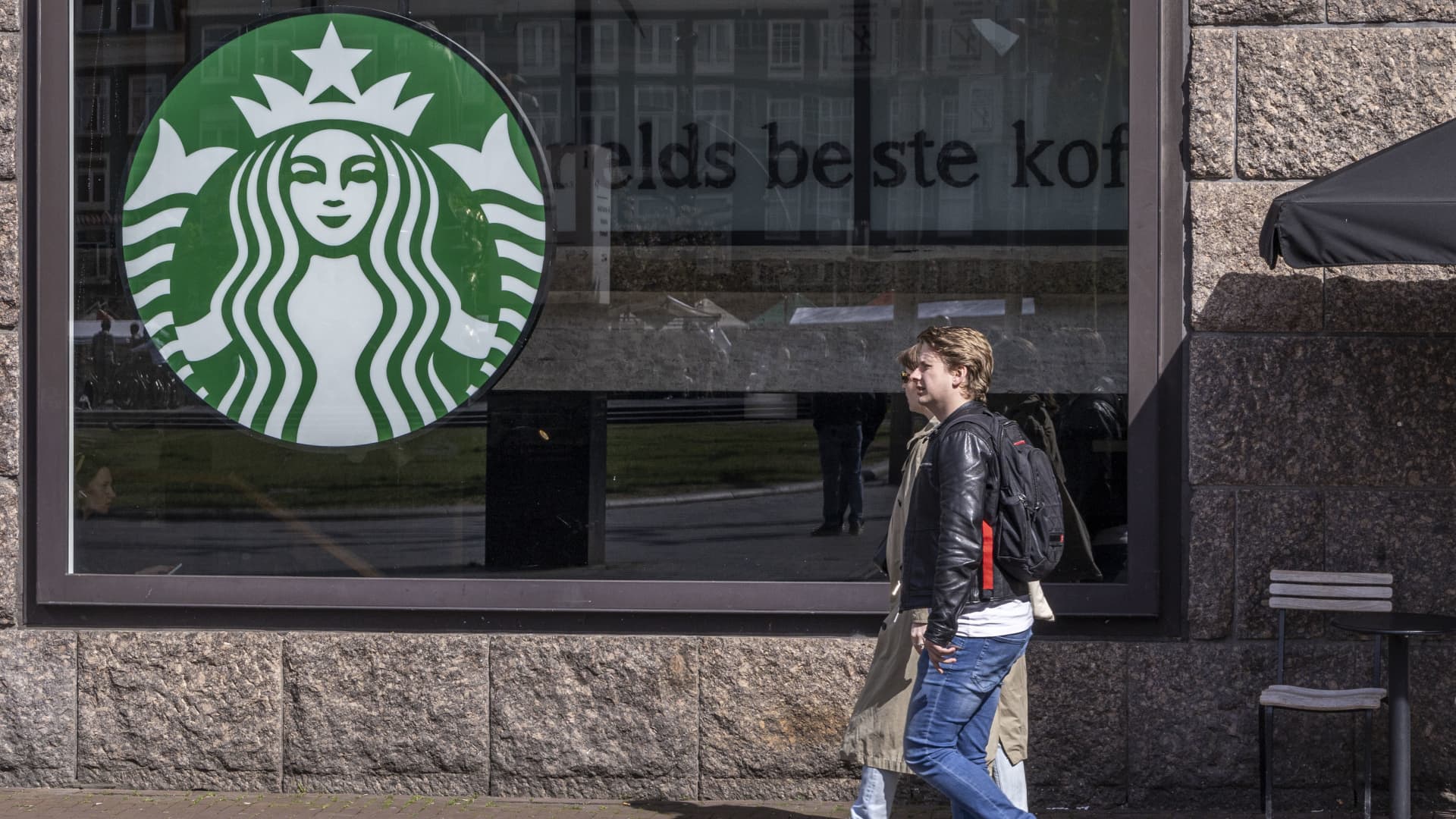Starbucks on Tuesday reported weaker-than-expected quarterly earnings and revenue, fueled by a surprise decline in same-store sales.
The coffee chain also slashed its forecast for its fiscal 2024 earnings and revenue, predicting that its cafes would keep underperforming for several quarters.
Shares of the company fell 12% in extended trading.
“In a highly challenged environment, this quarter’s results do not reflect the power of our brand, our capabilities or the opportunities ahead,” CEO Laxman Narasimhan said in a statement. “It did not meet our expectations, but we understand the specific challenges and opportunities immediately in front of us.”
The company’s same-store sales fell 4% as traffic to its cafes declined 6% in the quarter. Wall Street was anticipating same-store sales growth of 1%, according to StreetAccount estimates.
Across all regions, Starbucks reported shrinking same-store sales and falling traffic.
In the U.S., same-store sales decreased 3% as traffic sank 7%. This marks the second quarter that the company’s home market has struggled. Last quarter, executives blamed sluggish sales on boycotts targeting the company due to “misperceptions” of its stance on Israel.
Starbucks’ international segment reported same-store sales declines of 6% as both average ticket and transactions dropped. In China, Starbucks’ second-largest market, same-store sales plunged 11%, fueled by an 8% decline in average ticket.
“In this environment, many customers have been more exacting about where and how they choose to spend their money,” Narasimhan told analysts on the company’s conference call.
Here’s what the company reported compared with what Wall Street was expecting, based on a survey of analysts by LSEG:
- Earnings per share: 68 cents adjusted vs. 79 cents expected
- Revenue: $8.56 billion vs. $9.13 billion expected
The coffee giant reported fiscal second-quarter net income attributable to the company of $772.4 million, or 68 cents per share, down from $908.3 million, or 79 cents per share, a year earlier.
Net sales dropped nearly 2% to $8.56 billion.
For fiscal 2024, Starbucks now expects revenue growth in the low-single digits, down from its prior forecast of 7% to 10%. The company also revised its projections for global and U.S. same-store sales growth to a range of low-single digits to flat from its previous forecast of 4% to 6%. Same-store sales in China are expected to decline by single digits, down from the prior outlook of a single-digit increase.
Starbucks now also expects earnings per share growth in a range of flat to low-single digits. It previously forecast its earnings would climb 15% to 20% in fiscal 2024.
The company is forecasting that sales will start improving in the fiscal fourth quarter.
Waning sales
Starbucks’ most dedicated customers have stayed loyal and been using discounts offered via the company’s mobile app, executives said. But coffee drinkers who visit only occasionally have been buying Starbucks’ macchiatos and cold brew less often, executives said; Narasimhan said those customers want more variety from their coffee.
Starbucks is planning to offer a version of its app that allows customers to order without being a loyalty member in order to attract these occasional customers to visit more frequently.
Narasimhan said Starbucks is also exploring how to meet overnight demand, from 5 p.m. to 5 a.m. The company conducted a pilot test, which Narasimhan said doubled business.
He also said the chain’s lavender drinks were one of its most successful launches.
“Building off that success, we are aggressively pursuing options to build a $2 billion business over the next five years,” he said.
McDonald’s, PepsiCo and other companies have said this quarter that low-income consumers have pulled back their spending and are looking for deals.
“While it was a difficult quarter, we learned from our own underperformance and sharpened our focus with a comprehensive roadmap of well thought out actions making the path forward clear,” CFO Rachel Ruggeri said in a statement.
Narasimhan also said that the company now expects supply-chain cost savings of $4 billion over the next four years, revising its prior forecast of $3 billion over three years.
